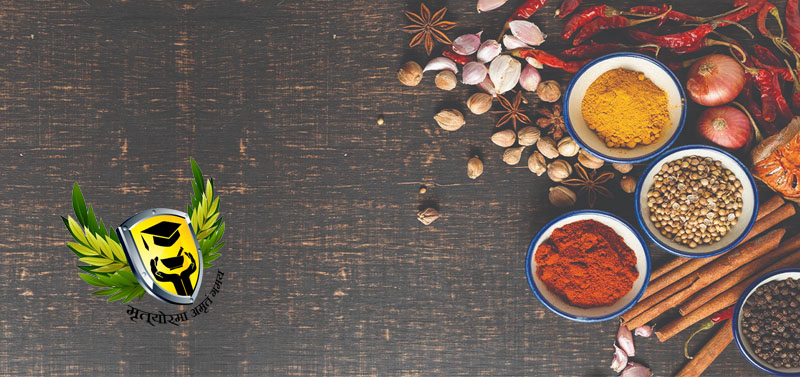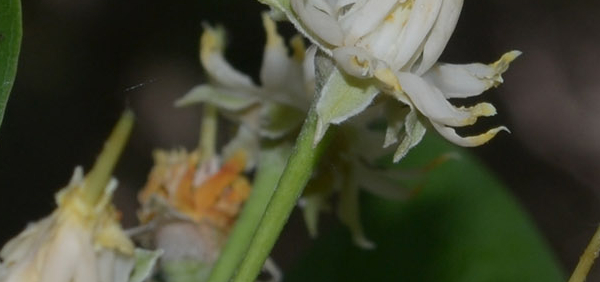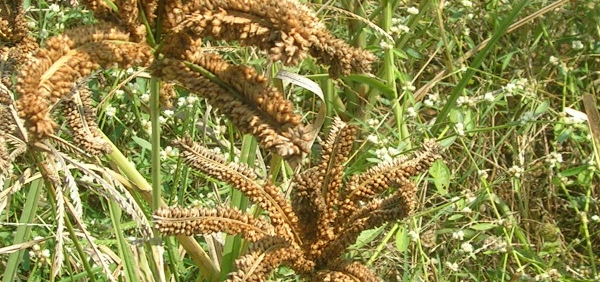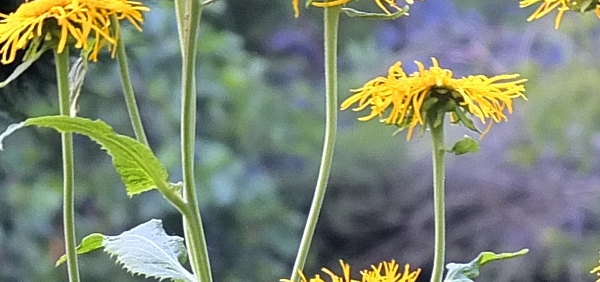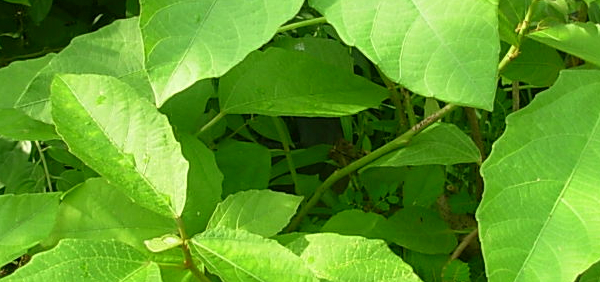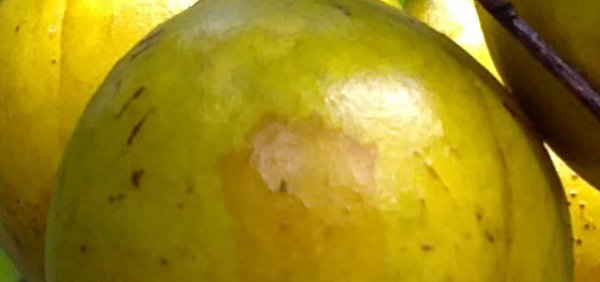lashuna :
 In Sanskrit, garlic is commonly known as lasuna or rasona. The species that is commonly
available in India is botanically known as Allium sativum. Apart from its medical use, it is commonly used as a condiment in the kitchens of Indian houses. As a medicine, it has a significant position.
In Sanskrit, garlic is commonly known as lasuna or rasona. The species that is commonly
available in India is botanically known as Allium sativum. Apart from its medical use, it is commonly used as a condiment in the kitchens of Indian houses. As a medicine, it has a significant position. HISTORICAL AND MYTHOLOGICAL REVIEW:
In traditional Chinese medicine (TCM), the first recorded mention of garlics medicinal properties is 2000 BCE, when it was believed to possess miraculous properties for curing poisoning. The venerable Yellow Emperor, Huang-ti, now revered as a mythic god-like figure, was the father of Chinese culture and medical knowledge. He laid the foundations for the principals of TCM and wrote the first text on Chinese medicine. Legend has it that one day Huangti was out walking with his companions. They all stopped to enjoy the fruits of nature and ate an aroid plant (related to the philodendron) called yu-yu, which poisoned them. Huang-ti acted quickly, however, and divined the intrinsic medicinal properties of a nearby herb. Upon his suggestion, they all ingested the herb, thereby curing themselves of the poisoning.Taxonomical Classification
Kingdom: Plantae - Plants
Subkingdom: Tracheobionta - Vascular plants
Superdivision: Spermatophyta - Seed plants
Division: Magnoliophyta - Flowering plants
Family: Liliaceae
Genus: Allium
Species: Allium sativum
Allied species:
VERNACULAR NAMES
Sanskrit: lashuna, rason, arishta, yavaneshta, mahaushadha, bhutaghna, ugragandha, amlakani, rasayanavara, jugupsitaEnglish: garlic
Hindi: Lahsun
Urdu: Lahsunلہسن
Telugu: Velluli
Bengali: Loshun
Marathi: Lasun
Konkani: लोसुण (losuN)
Oriya: rasuna, ରସୁଣ
Gujarathi: Lasan
Tamil: Poondu
Malayalam: veluthulli
Kannada: ಬೆಳ್ಳುಳ್ಳಿ
Punjabi: Lasan
Munda: रसुंडि – लहसुन
Arabic: ثوم, فوم Fum, Thoum, Thum
Spanish: ajo
Assamese: নহৰু
Japanese: ニンニク
Chinese: 蒜頭 [syun tàuh] Syun tauh, Suen tau
French: Ail, Thériaque des pauvres
German: Knoblauch
Burma: Chyet thon phew.
Nepal: लावा, लाभा Lava, Labha
Persian: Seer, Sir.
Sinhalese: සුදුළුනු
Tulu: bolluli
Greek: Σκόρδο Skordo
Varities:
Definition
Synonyms
Synonyms in Ayurveda: lashuna, rason, arishta, yavaneshta, mahaushadha, bhutaghna, ugragandha, amlakani, rasayanavara, jugupsita1.
Rasona, Rasuna, Rasonaka, Lasunana - Which is short of one taste(sour)
2.
Ugragandha - Having strong odour
3.
Mahoushadha
- Having great medicinal value
4.
Mlecchakanda , Yavaneshta - A bulb liked by yavanas
5.
Mahakanda, Sthulakanda - Having a big bulb
6.
Vatari -
Which alleviates vayu
7.
Dirghapatrakka, Pruthucchanda - Having long thick leaves
8.
Sikhimula, Sikhakanda - Having branched bulb
9.
Jugupsita
- Which is hated by saints
Rasa: Kashaya Katu Lavana Madhura Tikta
Guna: Guru Teeskhsna
Veerya: Ushna
Vipaka: Katu
Karma: Vathakaphahara
It has many therapeutic properties like Anti-inflamatory, Gastro-protective, Anti-cancerous, anti-oxidant and skin glow enhancing etc. Garlic’s antidiabetic, antibiotic and perhaps anticancer effects are well-accepted world over because of the many of scientific literature supporting these effects. Garlic also has hepatoprotective, antioxidant, and antihelmentic effect.
Cultivation:
Garlic was originally a plant of warm temperate areas with a distinct cold season and a change of daylength from short days in the winter to long days in the summer. In Spring, when days are cooler and shorter, the plant focuses mainly on leaf growth, but with lengthening, hotter days the focus moves to bulb production. The plant can be grown in tropical areas, but only really succeeds at elevations above 500 metres, and preferably below 2,00 metres. It grows best in areas where annual daytime temperatures are within the range 18 - 30°c, but can tolerate 7 - 35°c. It is able to tolerate temperatures down to at least -10°c. It prefers a mean annual rainfall in the range 750 - 1,600mm, but tolerates 500 - 2,700mm.Succeeds in most soils but prefers a sunny position in a moist light well-drained soil. Prefers a pH in the range 6 - 6.6, tolerating 5 - 8.5 Dislikes very acid soils. The bulb is liable to rot if grown in a wet soil
Propogation:
Plant out the cloves with their noses just below the soil surfaceHarvesting:
The plant takes 90 - 180 days from planting to harvesting. Yields are within the range of 5 - 10 t/ha.The bulbs should be planted fairly deeply.
Whilst bulb formation occurs in response to increasing daylength and temperature, it is also influenced by the temperature at which the cloves were stored prior to planting. Cool storage at temperatures between 0 - 10°c will hasten subsequent bulb formation, storage at above 25°c will delay or prevent bulb formation.
There are a number of named varieties.
Members of this genus are rarely if ever troubled by browsing deer
STANDARDIZATION:
naPhytochemistry:
- Volatile oil - 0.06-0.1%
- Carbohydrates - Arabinose, Galactose etc
- Vitamins - folic acid, Niacin, Riboflavin, thiamine, vit c
- Amino acids - (arinic, Asparagic acid, methionine etc.);
- Enzymes - allinase
- Volatile compounds - allylalcohol, allylthiol, allylpropyl disulphide etc.
PHARMACOLOGY:
IMPORTANT FORMULATIONS- Lasuna yoga,
- Lasunadya taila,
- Lasuna ksheerpaka,
- Rasona kalka,
- Rasona sarpi,
- Rasona Phanda
- Lashunadi vati.
Parts used for medicinal purpose
Pods, ,Dosage:
- Paste - 1-6 g in single or divided dose per day.
- Juice extract - 5-10 ml, once or twice a day.
- Oil - 1-2 ml in single or multiple dose per day.
Antidote:
No specific antidote is available for Allium toxicosis; however, supportive care may be helpful including hospitalization, administration of intravenous fluids and blood transfusions.Substitute:
Garlic powder has a different taste from fresh garlic. If used as a substitute for fresh garlicAdultrants:
garlic powder is adultered with chalk and talcControversy:
contrindications - Kaphaj and pittaj vikaras, agni mandya, old age, sutika (puerpera), Garbhini, shishu (child), aama rog (indigestion), jwara (fever), atisaara(diarrhea), kamala (jaundice), diseases of mukha and throat, shosha, immediately after vaman (emesis), virechana (purgation), nasya and basti .Commercial value:
Garlic is a great low-maintenance cash cropMorphology:
Garlic plants grow about 60 cm (2 feet) tall. Depending on the variety, the long leaves typically arise from a short hard stem above the bulb or emerge from a softer pseudostem made up of overlapping leaf sheaths.Histology:
-A clove of bulb shows tri to tetrangular appearance in outline; outer scale consists of an outer epidermis, followed by hypodermal crystal layer, mesophyll made of parenchyma cells and an inner epidermis; both outer and inner epidermis consists of sub rectangular cells; hypodermis consists of compressed, irregular, tangentially elongated cells, each cell having large prismatic crystals of calcium oxalate, while many cells contain small prismatic crystals also, mesophyll several layers of parenchymatous cells having a few vascular tissues with spiral vessels; inner epidermis similar to outer one; inner scale similar to outer scale but outer epidermis composed of sclerenchymatous cells; prismatic crystals in hypodermis slightly smaller. In surface view cells of outer epidermis elongated, narrow with thin porous wall while those of inner epidermis similar to outer one but non-porous; cells of hypodermal crystals layer ellipsoidal with thick porous walls, each cell having large prismatic crystals of calcium oxalate, many cells also contain small prismatic crystals in addition to bigger ones; inner scale shows markedly sclerenchymatous cells with greatly thickened walls and very narrow lumen; cells of hypodermal crystal layer somewhat smaller with walls more frequently pitted, size of crystals also smaller.Geographical distribution:
It is cultivated all over India. But mainly found in Karnataka, Ludhiana, Tamil Nadu, Andhra Pradesh, Uttar Pradesh and Gujarat.ECOLOGICAL ASPECT:
-Garlic cloves that exist are adapted to many ecological zones through theirPlant conservation:
Whilst bulb formation occurs in response to increasing daylength and temperature, it is also influenced by the temperature at which the cloves were stored prior to planting. Cool storage at temperatures between 0 - 10°c will hasten subsequent bulb formation, storage at above 25°c will delay or prevent bulb formation.General Use:
- This herb is loaded with the anti-oxidants properties and it helps to reduce the oxidative stress in body. It helps to protect cells from free radical damage.
- Use of this herb helps to minimize the bone loss by balancing the estrogen levels in females. Daily consumption of this herb helps to overcome the estrogen deficiency in females.
- This herb helps to maintain the healthy cholesterol levels in body. It helps to lower the LDL cholesterol (the Bad cholesterol) and increases the HDL (Good cholesterol) levels in the body.
- Being aphrodisiac in nature this herb helps to improve the libido and enhances sexual desire. In males it is quite good to resolve the various problems like premature ejaculation and erectile dysfunction and sexual weakness.
- Use of this herb is quite good for hair strengthening. It helps to maintain the hair healthy and strong. It strengthens hair follicles and promotes the hair growth. Its use is quite effective to reduce the hair fall also.
- This is known to be a good herb for digestive problems like indigestion, gastric disorders, gastritis, bloating, bowel movements, flatulence, heart burn and stomach aches. It is also acts as the laxative hence relieves the constipation. Hence this herb helps to maintain the good health of digestive system and can be used for the treatment of diarrhea and cholera.
- This herb acts as the cardiac tonic hence it helps in strengthening of heart muscles. So use of this herb is quite good to maintain the good heart health.
- Use of this herb is quite good in the hypertension as it helps to reduce the high blood pressure level in the body.
- Anti-bacterial properties of this herb are quite beneficial in the treatment of respiratory infections like cough and throat problems. It boosts up our immunity and increase the bodys stamina to fight against the infections.
- This herb helps in releasing insulin in the body. It helps to maintain the healthy blood sugar levels in the body. Hence use of this herb is quite good for diabetes patients.
- It has been found that people who eat garlic have less chances of developing colon, esophageal or stomach cancer.
- Use of rasona oil is quite good to suppress the pain in ear.
- This herb is also good to manage the brain disorders like Alzheimers disease and Dementia.
- Anti-inflammatory properties of this herb are quite good in sciatica and chest pain problems. As use of this herb helps in the reduction of body pain.
Therapeutic Uses:
Garlic is hypolipidaemic, fibrinolytic, anticoagulant, hypoglycaemic, antibacterial, antifungal (due to presence of allicin, allistatin, scrodinine)., anti-inflammatory, antimutagenic. Juice obtained from the bulbs of garlic revealed good oestrogenic activity in albino rats and didn’t reveal any antiimplantation activity. Thus it can be used in preconceptional period as it is shukra-shonita-garbha janana. Ethnobotanical studies have revealed that it is useful in premature ejaculation and for sexual vigour in addition to above said actionsSystemic Use:
Lashuna is a very commonly used Indian spice. Acharya Vagbhatta and Kashyapa has considered it as rasayana. While describing the properties and benefits of lashuna Acharya Vagbhatta has quoted that bhrish teekshna i.e. highly penetrating(deep into the tissues), ushna (hot in potency), katu paaka rasa (pungent in taste), sara, hridyay (good for heart) and keshya (hairs), guru(heavy to digest), vrishya(aphrodisiac), snigdha (unctuous), rochna deepana (improves taste and digestion), bhagna sandhana kara (helps union of fractures), balya (gives strength), rakta pitta pradushaka (vitiates blood and pitta), cures kilasa(leucoderma), kushtha (skin diseases), gulma(abdominal tumors), arsha (haemorrhoids), prameha, krimi, diseases caused by kapha and vata, shwas, kaasa, peenas (nasal catarrh).Administration:
Since rasona is devoid of sour tastes, it should be ingested with buttermilk. Since wine is the best sour stuff. Rasona should be ingested with wine, meat soup in Vata diseases.Pharmacological:
Rasona specially pacifies the Kapha Dosha which makes it useful to regulate the blood cho-lesterol levels and also removing toxins from the body.Clinical trials:
Small studies have shown that garlic exerts antimicrobial activity against gram-positive and gram-negative bacteria, viruses, fungi, and parasites. Topical and dietary garlic traditionally has been used in the treatment of infections—particularly digestive, respiratory, and derma-tologic infections—ranging from diarrhea and vaginitis to colds and warts, but few good clinical studies support this use.Research:
- Rizwan Ashraf Effects of Allium sativum (Garlic) on systolic and diastolic blood pressure in patients with essential hypertension Pak. J. Pharm. Sci., Vol.26, No.5, September 2013, pp.859-863
- Veena Dhawan, Garlic supplementation prevents oxidative DNA damage in essential Hypertension Molecular and Cellular Biochemistry July 2005, Volume 275, Issue 1–2, pp 85–94
- Gómez-Arbeláez D ,Aged garlic extract improves adiponectin levels in subjects with metabolic syndrome: a double-blind, placebo-controlled, randomized, crossover study. Mediators Inflamm. 2013;2013:285795. doi: 10.1155/2013/285795. Epub 2013 Feb 28.
- Silagy C,Garlic as a lipid lowering agent–a meta-analysis. J R Coll Physicians Lond. 1994 Jan-Feb;28(1):39-45.
- Kojuri J,Effects of anethum graveolens and garlic on lipid profile in hyperlipidemic patients. Lipids Health Dis. 2007 Mar 1;6:5.
- Amagase H,Intake of garlic and its bioactive components J Nutr. 2001 Mar;131(3s):955S- 62S. doi: 10.1093/jn/131.3.955S.
- Borek C1,Garlic reduces dementia and heart-disease risk. J Nutr. 2006 Mar;136(3 Suppl):810S-812S. doi: 10.1093/jn/136.3.810S
- Ezeala, C. C., I. N., “Fresh garlic extract protects the liver against acetaminophen-induced toxicity.” The Internet Journal of Nutrition and Wellness 7, no. 1 (2009).
Precautions:
Do not consume more than three to four raw cloves of garlic a day. • Patients having heart and other problems should take medical advice before consum-ing it. • Its best to avoid garlic before any surgery because it could probably disturb Anticoa-gulants. • If patient is on any medication, always check with doctor first before taking raw garlic.Toxicity studies:
Although, garlic is a natural Anti-biotic but a very small number of people have been known to exhibit Hypersensitivity to garlic. Garlic allergy includes skin rash, temperature and head-aches. Garlic intolerance could result in Heartburn or Flatulence.Use in other system of medicine:
CONCLUSION:
Garlic, Allium sativum L. is a member of the Alliaceae family, has been widely recognized as a valuable spice and a popular remedy for various ailments and physiological disorders. st bacterial, viral, mycotic and parasitic infectionsKEY WORDS: lashuna, Allium sativum Linn.
- » Classification and names of lashuna
- » Synonyms and definitions of lashuna
- » Drug Properties of lashuna
- » Chemical Constituents of lashuna
- » Standardization of lashuna
- » Parts used and Dosage of lashuna
- » Morphology and Histology of lashuna
- » Distribution and Conservation of lashuna
- » Cultivation of lashuna
- » lashuna in the market
- » Medicinal Uses of lashuna
- » Researches and clinical trails of lashuna
- » lashuna in other sytems of medicine
- » Ayurvedic formulations with lashuna
- » Images of lashuna


